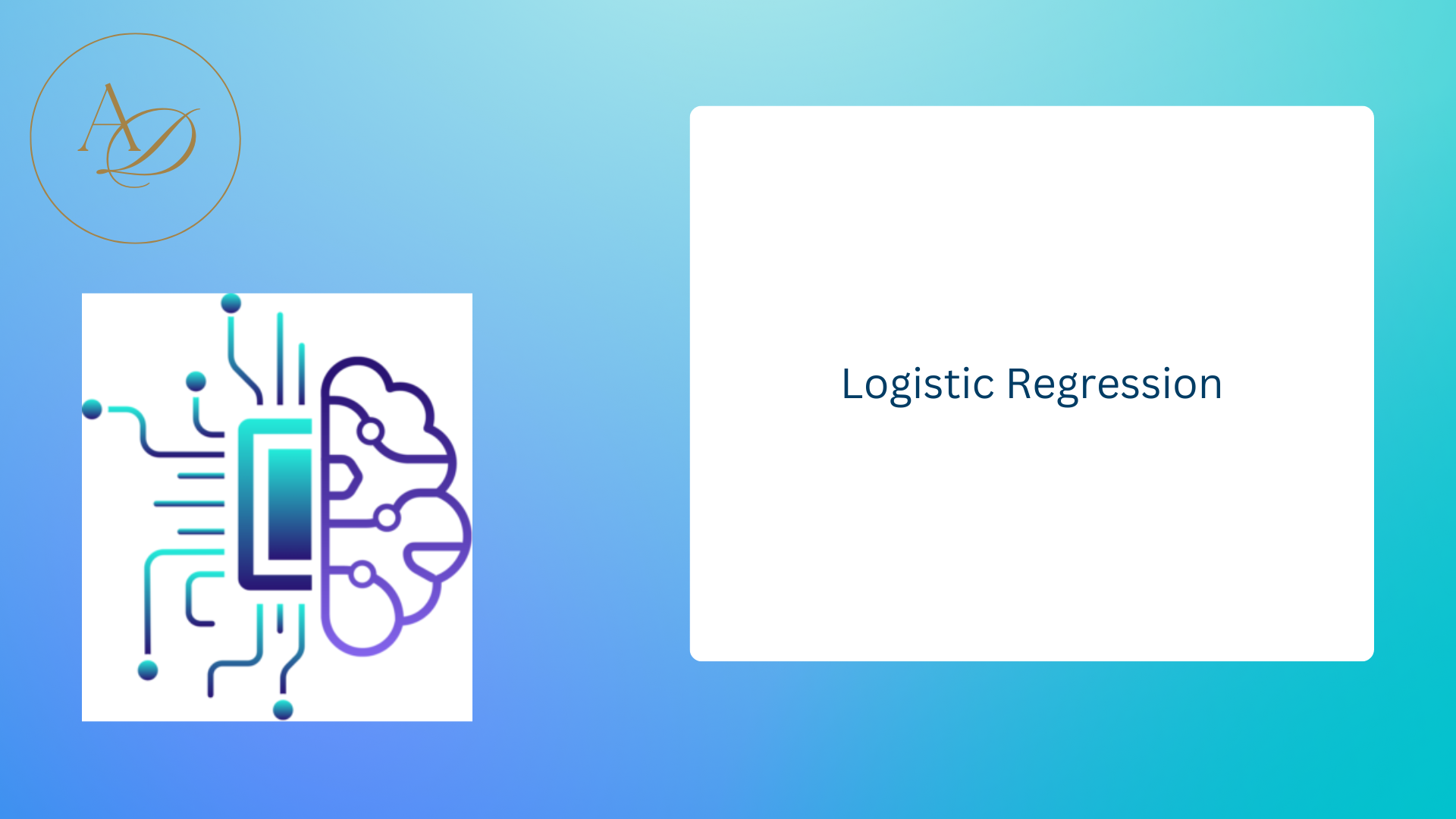Introduction:
In the realm of statistics and machine learning, logistic regression stands as one of the fundamental techniques for classification tasks. Despite its name, logistic regression is primarily used for binary classification problems. However, it can also be extended to handle multi-class classification tasks with appropriate modifications.
Table of Contents
- What is Logistic Regression?
- Mathematical Foundations
- Assumptions of Logistic Regression
- Applications of Logistic Regression
- Advantages and Disadvantages
- Implementation and Training
- Evaluation Metrics
- Tips and Best Practices
1. What is Logistic Regression?
Logistic regression is a statistical method used for predicting the probability of a binary outcome based on one or more predictor variables. Unlike linear regression, which predicts continuous values, logistic regression predicts the probability that a given instance belongs to a particular category.
The output of logistic regression is a probability value between 0 and 1, which can be interpreted as the likelihood of the instance belonging to the positive class. Typically, a threshold (often 0.5) is chosen, and if the predicted probability is greater than the threshold, the instance is classified into the positive class; otherwise, it’s classified into the negative class.
2. Mathematical Foundations
Logistic Function:
The logistic function, also known as the sigmoid function, is at the heart of logistic regression. It’s defined as:
[latex] \sigma(z) = \frac{1}{1 + e^{-z}} [/latex]
where z = β0 + β1x1 + β2x2 + … + βnxn represents the linear combination of input features and their corresponding coefficients.
Hypothesis Function:
The hypothesis function in logistic regression is the logistic function applied to the linear combination of input features:
[latex] h_\beta(x) = \sigma(\beta^Tx) [/latex]
where ( [latex]h_\beta(x)[/latex] ) represents the predicted probability that ( x ) belongs to the positive class.
Cost Function:
The cost function in logistic regression is derived from maximum likelihood estimation. The commonly used cost function is the log loss (or cross-entropy loss):
[latex] J(\beta) = -\frac{1}{m} \sum_{i=1}^{m} [y^{(i)} \log(h_\beta(x^{(i)})) + (1 – y^{(i)}) \log(1 – h_\beta(x^{(i)}))] [/latex]
where ( m ) is the number of training examples, ( [latex]y^{(i)} [/latex]) is the actual label of the ( i )-th example, and ([latex] h_\beta(x^{(i)}) [/latex]) is the predicted probability.
3. Assumptions of Logistic Regression
- Binary Outcome: Logistic regression is suitable for binary classification tasks where the dependent variable has two categories.
- Independence of Observations: The observations must be independent of each other.
- Linearity of Independent Variables and Log Odds: The relationship between the independent variables and the log odds of the dependent variable should be linear.
- No Multicollinearity: There should be little or no multicollinearity among the independent variables.
4. Applications of Logistic Regression
Logistic regression finds applications across various domains, including:
- Finance: Predicting whether a customer will default on a loan.
- Healthcare: Predicting the likelihood of a patient having a particular disease based on symptoms.
- Marketing: Predicting whether a customer will purchase a product.
- Social Sciences: Predicting voter turnout based on demographic variables.
5. Advantages and Disadvantages
Advantages:
- Interpretability: The coefficients of logistic regression can be interpreted in terms of odds ratios.
- Efficiency: Logistic regression can handle large datasets efficiently.
- Works well with small sample sizes: It performs well even with a small number of observations.
- Low computational cost: Logistic regression is computationally less intensive compared to some other algorithms.
Disadvantages:
- Assumption of Linearity: Logistic regression assumes a linear relationship between the independent variables and the log odds.
- Limited to Linear Decision Boundaries: Logistic regression can only model linear decision boundaries, limiting its capacity to capture complex relationships.
- Sensitive to Outliers: Logistic regression is sensitive to outliers, which can impact the model’s performance.
6. Implementation and Training
Training:
- Gradient Descent: Gradient descent is commonly used to optimize the parameters of logistic regression.
- Regularization: Techniques like L1 and L2 regularization can be employed to prevent overfitting.
Implementation:
Logistic regression can be implemented using various programming languages and libraries such as Python (with libraries like scikit-learn, TensorFlow, or PyTorch), R, MATLAB, etc.
7. Evaluation Metrics
Confusion Matrix:
- Accuracy: Ratio of correctly predicted instances to the total instances.
- Precision: Ratio of correctly predicted positive observations to the total predicted positive observations.
- Recall (Sensitivity): Ratio of correctly predicted positive observations to all actual positives.
- F1 Score: Harmonic mean of precision and recall.
8. Tips and Best Practices
- Feature Selection: Choose relevant features and remove redundant ones.
- Feature Scaling: Scale the features if they are on different scales to ensure faster convergence.
- Regularization: Use regularization techniques to prevent overfitting.
- Cross-Validation: Utilize cross-validation to assess the model’s generalization performance.
Logistic regression is a powerful and interpretable technique for binary classification tasks. By understanding its mathematical foundations, assumptions, applications, and implementation techniques, practitioners can effectively apply logistic regression in various real-world scenarios. While logistic regression has its limitations, it remains a valuable tool in the data scientist’s toolbox, particularly when interpretability and efficiency are paramount.

